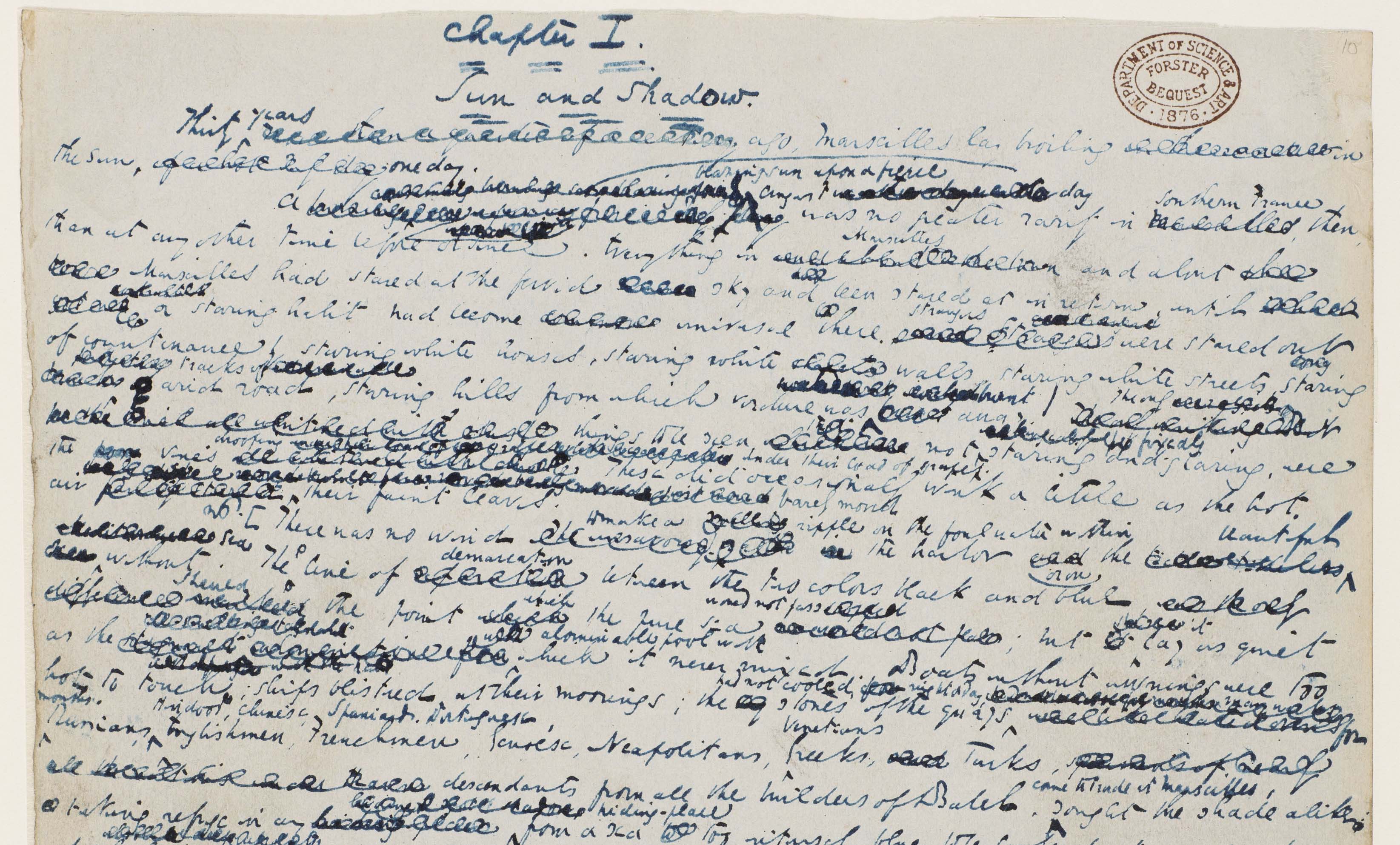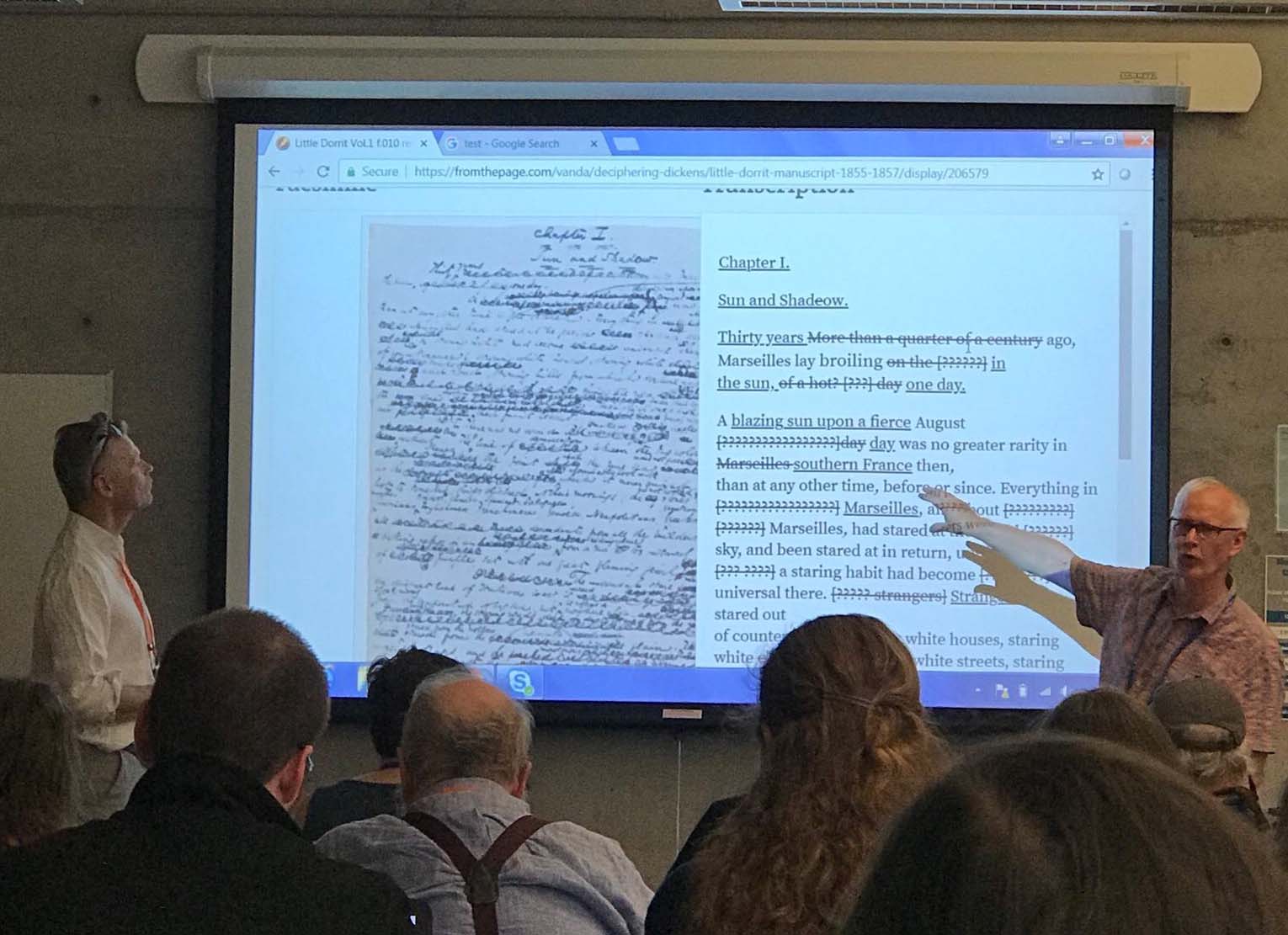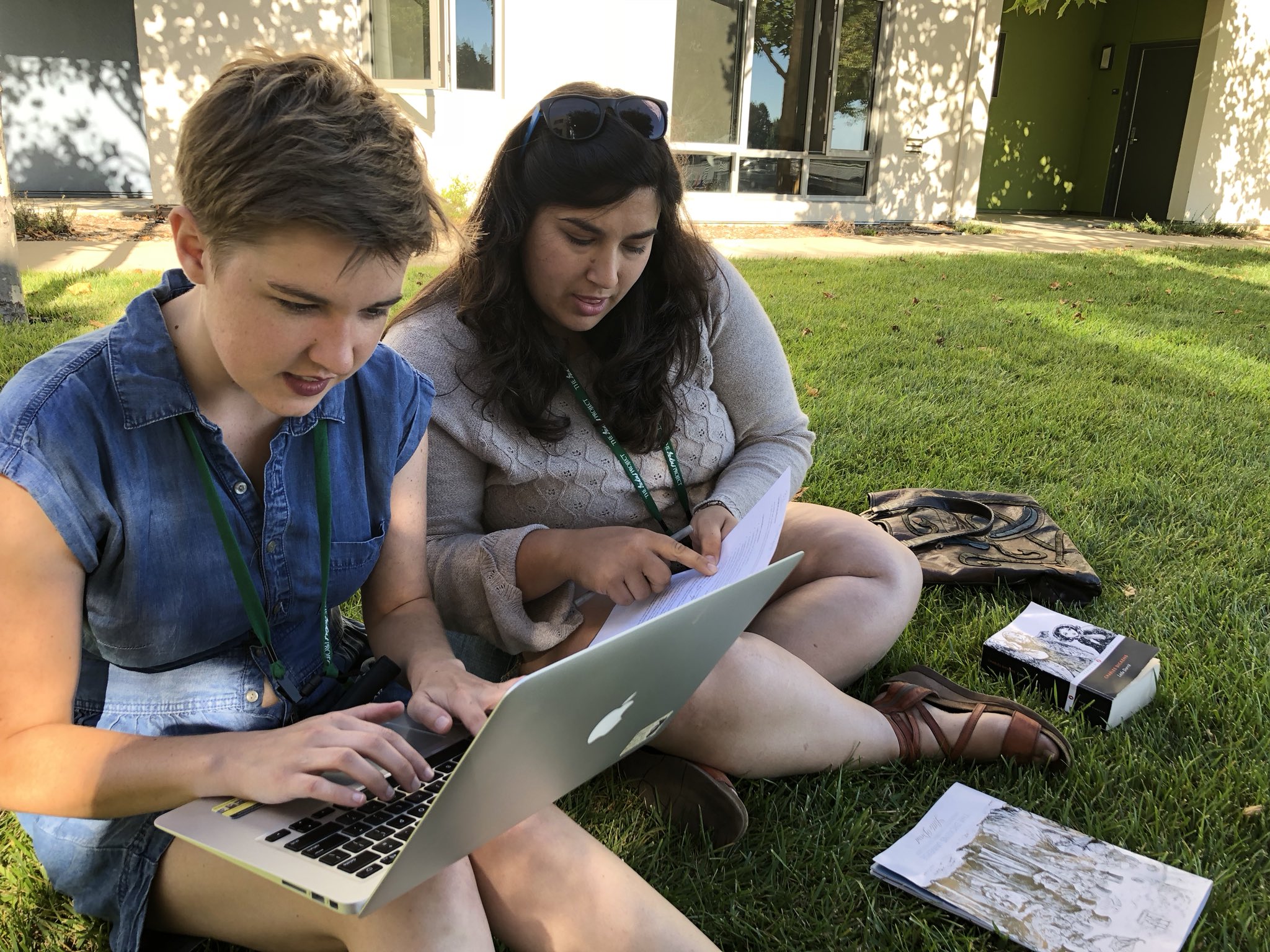Charles Dickens and the V&A
The Museum holds the original manuscripts for many of Charles Dickens’s novels, including Bleak House, Hard Times and Little Dorrit. We also have the working notes, printers’ proofs, illustrations and early editions for some of the author’s texts.
I’m working on one of the V&A Research Institute’s current projects, entitled Deciphering Dickens. With support from the Andrew W. Mellon Foundation, Professor John Bowen and I are exploring ways to make Dickens’s extensive output more accessible online. We’re also hoping to discover more about his working methods and creative process.
One of the Deciphering Dickens project’s aims is to investigate the possibility of using crowdsourcing to help us interpret his handwriting. As you’ll see from the image below, though, it’s far from easy to read!

The Dickens Universe
John and I recently attended the Dickens Universe conference held in Santa Cruz, California. The theme happened to be Little Dorrit, one of the Dickens manuscripts in the V&A collection. Attendees included undergraduate and postgraduate students, teachers, Dickens experts, retired academics, Road Scholars and members of the general public. The conference thus provided an ideal opportunity to test out some of our ideas for the Deciphering Dickens project.

Deciphering Little Dorrit
Some fifty people attended one or more of the Deciphering Little Dorrit sessions, and about forty of them actively engaged in the online transcription. They viewed images of the first chapters of Little Dorrit, then tried to interpret the author’s numerous insertions and deletions.
The software we’re using for the pilot project is FromThePage, which is also used by many other crowdsourcing projects. We were able to display the individual manuscript pages alongside the published text of the novel, then invite attendees to edit the text to match the original manuscript.
We also experimented with making high-resolution page images available via an emerging standard known as the International Image Interoperability Framework (IIIF).

We concentrated on the first four chapters, making great progress in a fairly short time. Deciphering Dickens’s handwriting can be quite addictive, and some participants continued to work on their pages for days or weeks after the conference ended.
Feedback
People who attended the sessions also supplied some useful feedback:
- I liked the new and interactive way to engage with the text. I am working on a manuscript for the very first time and I truly enjoy it.
- Becoming submerged in Dickens’s handwriting gives me a new sense of an active creative process that I don’t have from reading a sanitized, nice-printed page. I love seeing his decision making!
- It was so exciting to have the opportunity to uncover Dickens’ process. I got to see him decide to make the lock-keeper’s daughter “pretty” after he had already written that scene. To be able to zoom in on the manuscript page was also fantastic.
- The opportunity to look at high-res scans of the manuscript pages and to see Dickens’s process at work was excellent. It raises all sorts of critical questions about textuality and editing and allowed us to get a sense of the painstaking and careful work required in producing “authoritative” editions.
- I loved getting to work with the original text closely on an individual basis while others were doing the same thing all around me. We were making separate discoveries that we could then share since we were in one space. It was a magical experience.
- It’s as close as one can get to watching Dickens at work.
Next steps
A lot remains to be done, but we now have a much better understanding of what’s possible using the crowdsourcing methodology. We’ll be posting more news as the project develops!


